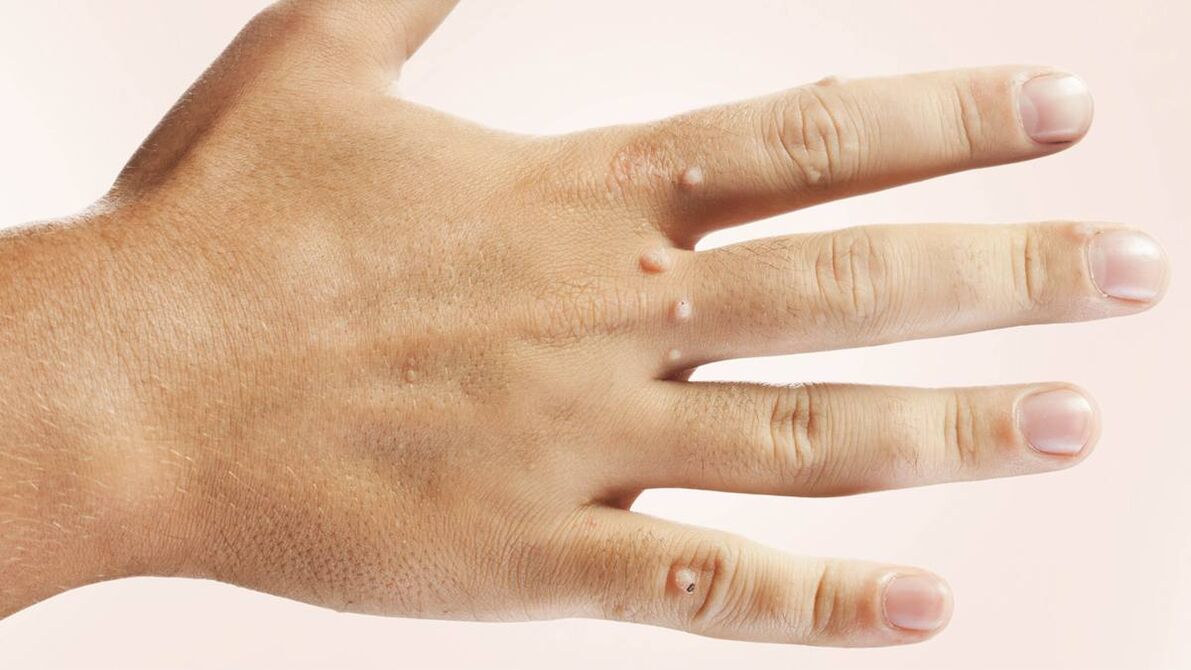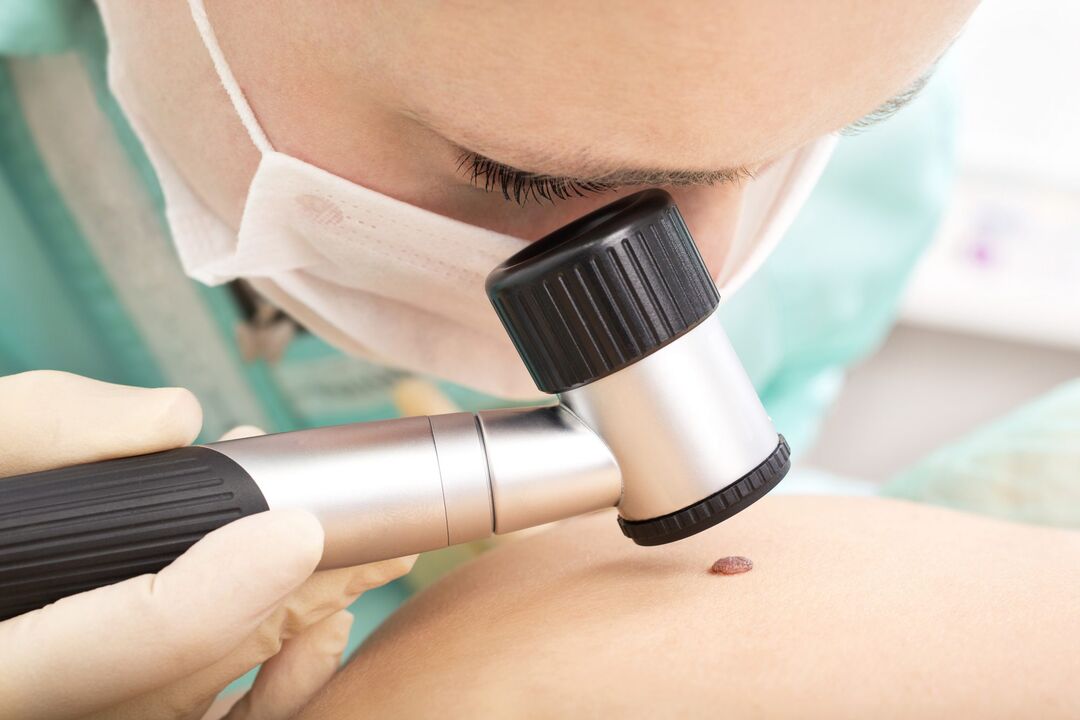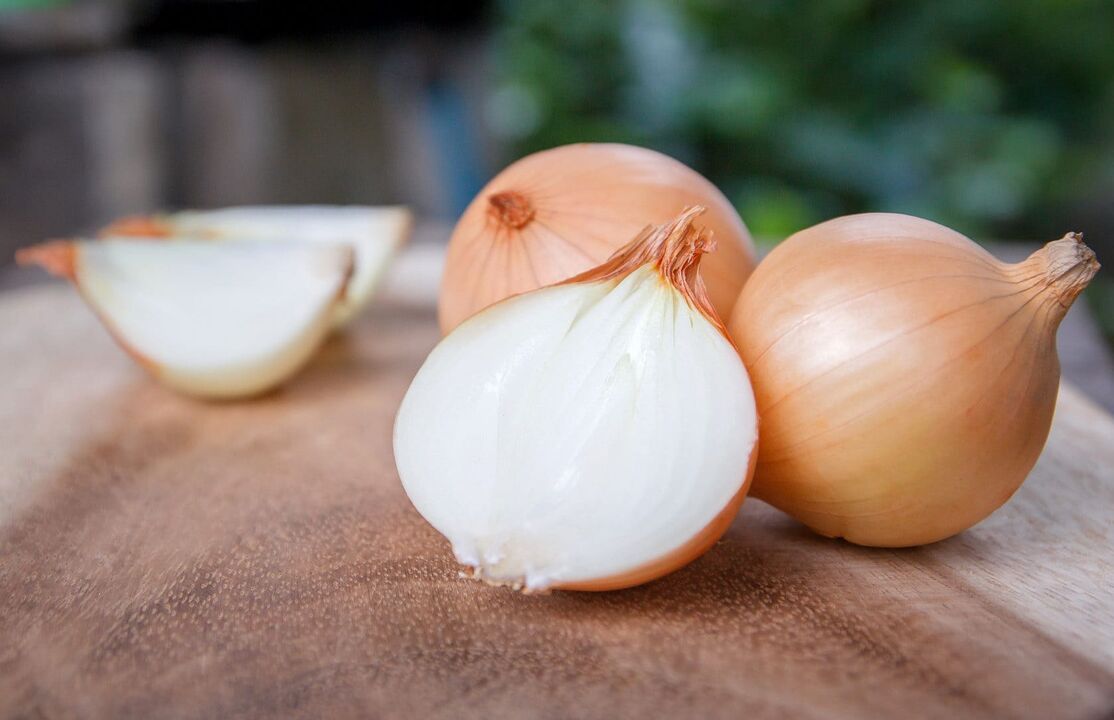Warts can appear on anyone's body. In many cases, they disappear on their own, but sometimes it becomes necessary to remove them. Wart removal, of course, is best done in a healthcare setting. The self-disposition of such neoplasms may not work or, conversely, lead to their injury. You will learn about where you can remove warts from the next article.

Who can have warts
Everyone can get warts, but the most likely to get a papilloma virus are:
- children and adolescents;
- adults and children who have a habit of biting their fingernails or biting barbs.
- people with weakened immune systems.
In children, warts usually go away without treatment. You should consult a dermatologist if the warts bother the child (for example, painfully) or multiply very quickly.
Signs and symptoms
Depending on the appearance and location on the body, there are different types of warts. The following are the signs (what the person sees) and the symptoms (what the person feels) that are common to certain types of warts.
Rough (common) warts
If a child has warts on their face, be sure to check their hands - you will probably see warts there as well. The virus usually spreads to the skin of the face when touched or when a child bites his fingernails.
Rough warts:
- most often on the fingers, around the nails and on the back of the palms.
- more common in places where the skin is often damaged, for example, in places where there are cracks or when the habit of biting nails.
- most often they look like a small nodule (condensation) with an irregular rough surface.
- may have black dots on the surface (actually, these are small clotted vessels), which are sometimes incorrectly called the "root" of the wart.
Plantar warts
They occur on the sole of the foot and are sometimes difficult to treat.
Planoid warts:
- occurs most often on the soles of the feet.
- can grow, unite and form so-called swarms (mosaic warts).
- most often flat or rising inwards (due to the pressure created when walking).
- are painful, especially with pressure.
- often cause the feeling of pebbles in shoes.
- may have black dots on the surface.
Flat warts
- It can occur anywhere, but, as a rule, it occurs more often in children on the face, in men - on the chin, in women - on the legs.
- Smaller and smoother than other types of warts
- usually multiple and in groups, usually appearing in large numbers - from 20 to 100 at a time.
Phylloid warts (warts)
- look like long threads or thin protrusions that look like fingers.
- are most common on the face: around the mouth, eyes and nose.
- tend to grow rapidly.
I need to get rid of warts and why
For each type of papillomavirus in medicine, a numbering system is used. It is known that the types of HPV with numbers 57, 26-29, 14-17, 12, 10, 7 1-5-are guilty of occurrence of different types of warts, from 1 to 4-cause plantar warts, 49, 28, 3 and 10- flat, HPV 27 - common.
Oncogenic types of HPV require special attention, such as 52, 39, 33, 31, 30, 70, 40, 51, 55, 61-64, can cause precancerous disease and are considered the most dangerous. When found in the penis, vagina, cervix - HPV types 16, 11, 13, 31, 33, 35 - they form genital warts and papillomas.
The following papillomaviruses, which can be found in the external genitalia and mucous membranes, are recognized as particularly dangerous - these are types 70, 66, 56, 33, 31, 18, 16. Many people who develop warts ask, areis it possible to remove warts, is it dangerous or not?
In any case, a person should consult a dermatologist to determine the nature of the tumor, its type. In addition to eliminating the aesthetic discomfort, the increased risk of developmental injury, it is necessary to treat or remove the neoplasms because the presence of foci of a viral infection causes it to spread to other areas of the skin and there is also a risk the neoplasm degenerates into malignancy. Be sure to consult a dermatologist to find out the type of wart, papilloma or wart and determine the best way to get rid of it.
Do not postpone your visit if:
- The tumor is bleeding or has ruptured.
- If the wart becomes painful, itching, burning occurs
- It changes color, becomes heterogeneous in color, changes shape and size
- The number of warts increases, multiple subsidiary growths appear
- If the wart is located in a conspicuous place, it is often injured and causes psychological discomfort.
Removing a wart at home on its own may not be safe. All doctors are unanimous in the opinion that removing a wart at home is dangerous and is not recommended for the following reasons:
- The self-disposition of the accumulation most often leads to the formation of a scar, scar or burn of the nearest skin tissue.
- With various home remedies, it is possible to introduce an infection into the wound and develop an inflammatory process or spread the virus to other areas of the skin.
Of course, the possibility of turning a real wart into a malignant neoplasm is not high, but there is still such a risk and after self-removal of any neoplasm, without diagnosis and hysteroscopy of the removed material, there may be adverse consequences.
How are warts diagnosed?
In the case of warts, the dermatologist usually only needs to look at them to make a diagnosis. In some rare cases, a biopsy may be needed to confirm the diagnosis. To do this, the doctor will remove the wart and send the sample to the lab, where it is examined under a microscope. Do not worry - this is a fast and safe process.

How to deal with warts
In children, warts usually go away without any treatment.
In adults, warts in most cases are also completely harmless, but unlike children, they sometimes do not go away on their own.
Consultation with a dermatologist is necessary if:
- warts change shape, color, size.
- warts hurt you.
- the number of warts is increasing.
There are many different methods for removing warts. The choice of this or that method depends on the age of the patient, the state of health, as well as the type of wart.
Wart - body growth
Nipples (warts) are often confused with moles. Warts, like moles, can be removed in the same way. Everyone has their own advantages and disadvantages. For example, traditional surgery leaves a scar on the skin anyway.
Surgical removal of warts is usually not recommended because warts often grow back.
With cryopreservation and laser removal, it is not always possible to accurately control the depth of the tissue effect. Electrocoagulation allows you to control the depth of exposure, but the risk of scarring remains. Therefore, a combination of several methods is sometimes used. Other treatments for warts include topical salicylic acid, adhesive tape and chemical treatments.
Basic methods of wart removal
As practice shows, many patients try to get rid of them using folk methods. However, it is always worth understanding that folk remedies alone are not very effective and in some cases can even prove dangerous. The correct procedure is possible only if the specialist fights not only with the skin manifestations of the virus, but also with his own base. There are several methods to get rid of these tumors:
- Radio waves. . . A relatively new, but already well-proven method. With the help of a special device, a radio wave of a specific frequency is exposed to the formation of the skin. The advantage of the method is that it allows you to remove both the wart itself and its root.
- Electrocoagulation.This term conceals the cauterization of the tumor using a special electrode. Thanks to the local anesthesia, under which all the procedures are performed, you can always be sure that you will not experience negative sensations.
- A liquid nitrogen.Another known method. Nitrogen freezes the wart and its root, due to which a really immediate and high quality removal takes place.
To remove warts, dermatologists can use:
- Cryotherapy(liquid nitrogen) is the most common method of removing vulgar warts in adults and older children and is not overly painful. But usually the process has to be repeated. And the use of this method in people with black skin can lead to the formation of dark spots on the skin.
- Electrosurgery and curettage. . . Electrosurgical (electric moxibustion) is an effective way to remove vulgar, filamentous and plantar warts. Haircut is a method that involves scraping the wart with a sharp knife or a special instrument (curette). After scratching, electrocoagulation is performed and a bandage is placed on the wound.
Often these two processes are used together. A dermatologist can remove warts with curettage before or after cauterization.
The doctor may also remove the wart surgically.
In cases where the above methods have not given positive results, the dermatologist can use one of the following methods:
- Laser treatment performed under local anesthesia.
- Cauterization chemicals are usually prescribed to treat warts. Such peeling is done daily at home, so they use salicylic acid and glycolic acid preparations.
- Immunotherapy in the treatment of warts is a way of activating the body's own defenses. It is recommended in cases where other types of treatment have not yielded positive results.
One of the types of immunotherapy is the application of a special substance to the warts. An allergic reaction occurs around the warts, which can help the body deal with them. Another type of immunotherapy is the injection of interferon inside the warts. Injections can boost immunity and make the body fight the virus.
Unfortunately, there is no way to get rid of warts once and for all with a 100% guarantee. They can reappear in the old place and reappear in a new place. Sometimes it seems that the new warts appear faster than the old ones disappear. This happens if the virus infects the cells next to the wart before it is removed. This is why new warts usually appear near where the old one was.
Self-healing and removal
There are a huge number of ways in which wart removal with folk remedies is quite successful, but this does not mean that you should forget about traditional medicine and do self-medication constantly.
Any recipe for wart removal, any video about wart removal, reviews by people and cosmetologists - this is just an introductory material showing that wart removal in children and adults is possible without consequences.
But you should never experiment and jump to conclusions - any tumor in the human body should be seen by a doctor, studied by a laboratory and only then treated or removed. Nevertheless, we decided to show you some of the methods used to remove warts at home. We hope that this material, as we advised you, will remain for you only informative.
Since the cost of wart removal in some beauty clinics and salons scares people a little, they try to cure the tumors on their own, so it happens.
Bulb treatment
A raw, medium-sized onion is soaked in vinegar for about two hours, cut and attached to the warts overnight. The procedure is performed until the wart disappears.

Wood ash processing
The wood ash, preferably fresh, should be diluted with clean water until a homogeneous paste is formed, which should be applied daily to the warts until they disappear.
Wart removal with celandine
The wart is smeared with fresh celandine juice in the morning and evening. Due to the alkaloids contained in it, warts heal quickly. They dry and leave. The procedure must be repeated until the wart is completely gone. Be careful when using celandine juice, it should not get into healthy skin, as it is quite irritating.
Removal of warts and papillae with cauterization
The method is painful, but, according to many people, it is quite effective. It is necessary to take a dry stick from a branch of any tree and keep it on an open fire. When it starts to burn slowly, you need to cauterize the tumor with heat. This should be done several times, after 5-7 days the wart will disappear.
As you can see, in addition to the fact that you can buy warts remedies at the pharmacy, you can still grow them in your own cottage or find them at home. It is up to you to experiment or not, to think, but we have made our choice and we have already suggested it to you several times.
After removing the nipple
Remember that simply removing the warts does not eliminate the virus from the body. After a long or not long time, the papules may reappear. This is due to the presence of viral particles. To get rid of the virus for a long time, prevention must be done. How to do it?
Treatment with vitamins. Take a two- to three-month course focusing on the high concentration of zinc in the vitamin and mineral complexes taken. Zinc inhibits the proliferation of virus particles. Thus, the human papillomavirus dies once and for all.
- Good personal hygiene. Good skin care.
- Avoid stress, overwork, normalize daily life. Sleep should last at least eight hours a day.
- They eat well.
- Try not to overcool, avoid colds after removing the warts for the first three months and better - six months.
- Check for intestinal dysbiosis. If available, follow a course of probiotic treatment.
- See an infectious disease specialist or immunologist. Your doctor will prescribe antiviral drugs that stimulate your immune system.
When you think of removing warts, first visit a competent specialist.
Nipples with suspected malignancy are best removed at an oncologist appointment.
Such formations are better subjected to histological control examination.
Prevention
To prevent the appearance of warts, dermatologists recommend the following:
- do not injure the warts.
- wear sandals or other special shoes when visiting the pool, as well as in public showers and changing rooms;
- do not touch other people's warts.
- Wipe dry feet with warts, moisture tends to spread the warts.














































































